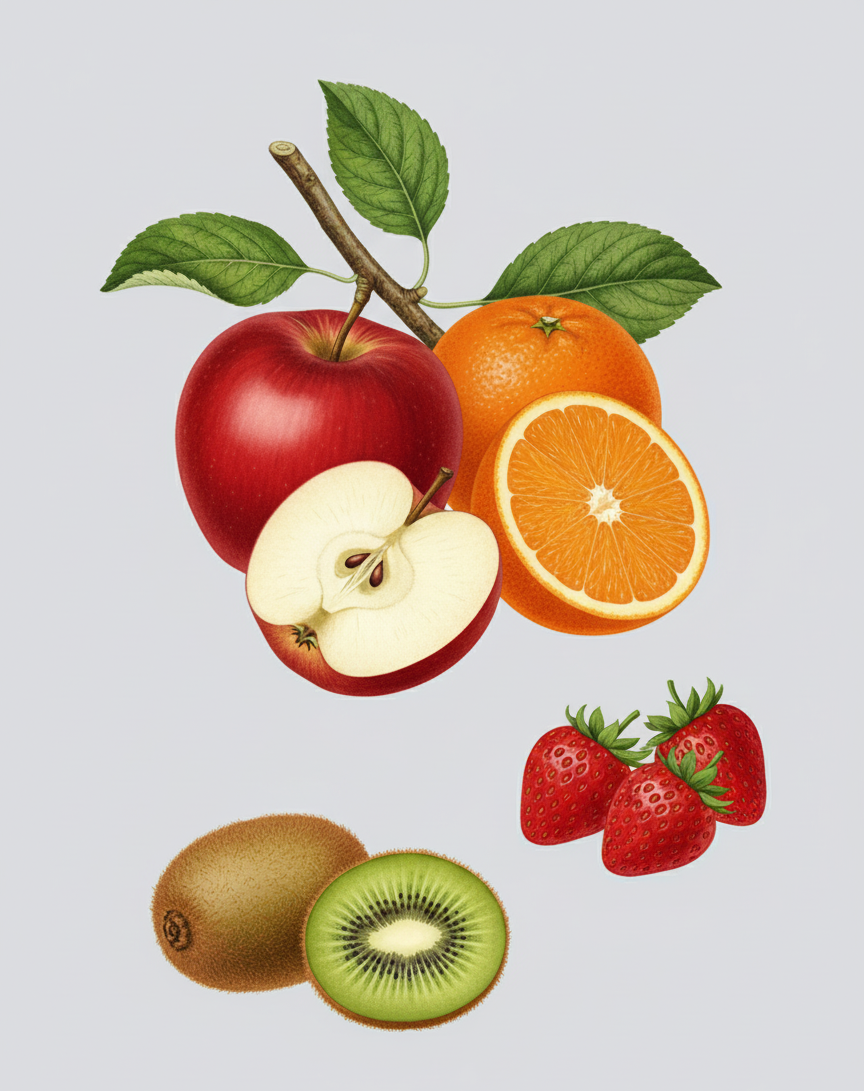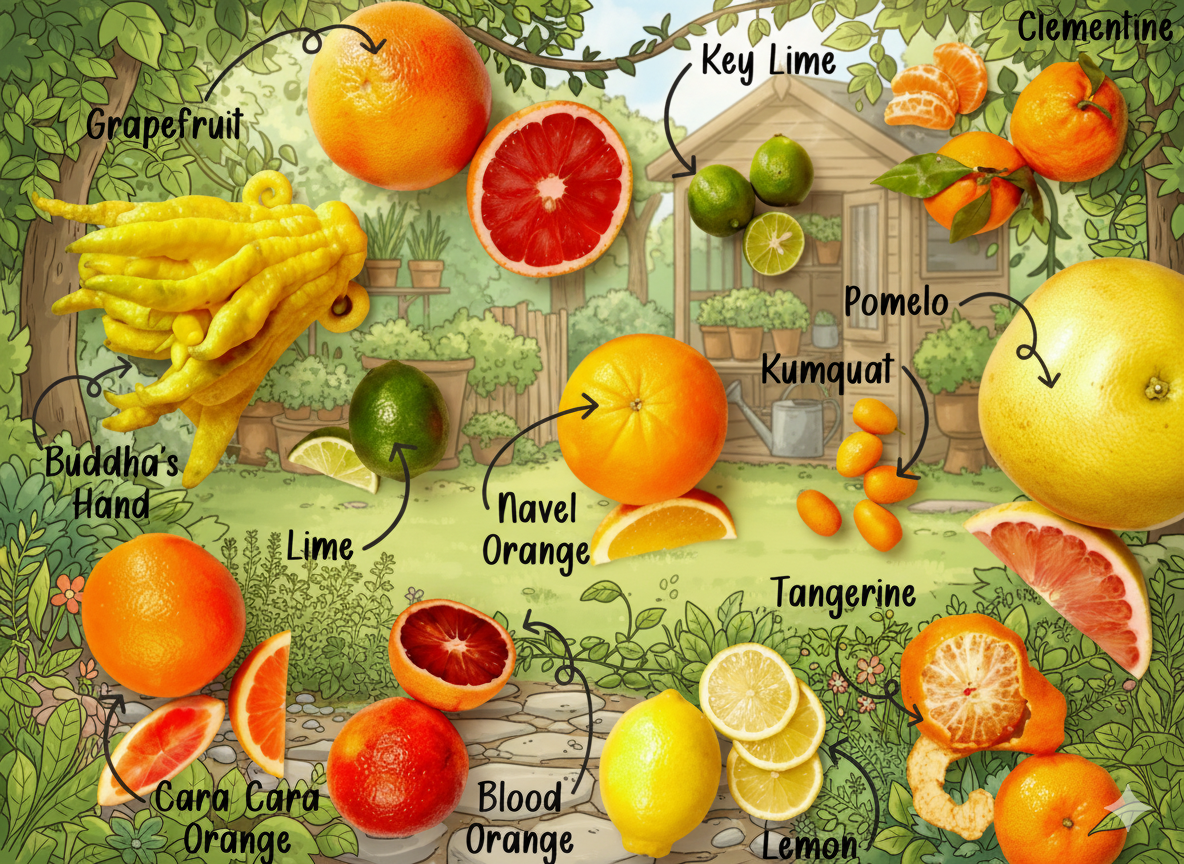Vibrant Fruit Collection: A Detailed Illustration
Fruits are not only a feast for the eyes but also a powerhouse of nutrition. With their vibrant colors and delightful flavors, they are nature’s candy. In this blog post, we will explore a detailed illustration of various fruits, diving into their unique characteristics, health benefits, and culinary uses. Whether you’re a fruit enthusiast or simply looking to incorporate more of these natural wonders into your diet, this comprehensive guide will provide you with valuable insights.
The Importance of Fruits in Our Diet
Fruits are essential for a balanced diet. They are rich in vitamins, minerals, antioxidants, and dietary fiber. Consuming a variety of fruits can help prevent chronic diseases, improve digestion, and enhance overall health. The World Health Organization recommends eating at least five servings of fruits and vegetables each day to reap the maximum benefits.
Classification of Fruits
Fruits can be classified into several categories based on their botanical characteristics. Understanding these categories can help you appreciate the diversity of fruits and their uses:
1. Citrus Fruits
Citrus fruits are known for their tangy flavor and high vitamin C content. They include:
- Oranges: Sweet and juicy, oranges are a great source of vitamin C and fiber.
- Lemons: Known for their acidic taste, lemons are often used in beverages and desserts.
- Limes: Similar to lemons, limes add a zesty flavor to dishes and drinks.
- Grapefruits: These can be bitter or sweet and are often enjoyed at breakfast.
2. Berries
Berries are not only delicious but also packed with antioxidants. Some popular varieties include:
- Blueberries: Recognized for their high antioxidant levels, blueberries are great for brain health. You can learn more about their benefits in our article Healthy Fruits You Can’t Ignore: Benefits of Blueberries to Avocados.
- Strawberries: Sweet and succulent, strawberries are rich in vitamin C and manganese.
- Raspberries: Known for their unique flavor, raspberries are high in fiber and vitamins.
- Blackberries: These are packed with vitamins C and K and have anti-inflammatory properties.
3. Stone Fruits
Stone fruits are characterized by a large pit or “stone” inside. They include:
- Peaches: Juicy and fragrant, peaches are a summer favorite.
- Cherries: Sweet or tart, cherries can be enjoyed fresh or in desserts.
- Plums: These come in various colors and are rich in vitamins C and K.
- Apricots: Sweet and slightly tart, apricots are low in calories and high in nutrients.
4. Tropical Fruits
Tropical fruits are known for their exotic flavors and vibrant colors. Some famous tropical fruits include:
- Mangoes: Known as the “king of fruits,” mangoes are sweet and juicy, packed with vitamins A and C. Discover more about their health benefits in our blog post From Blueberries to Mango: Fruits That Supercharge Your Health.
- Pineapples: With their sweet and tangy flavor, pineapples are rich in bromelain, an enzyme that aids digestion.
- Bananas: A convenient snack, bananas are high in potassium and provide an energy boost.
- Coconuts: Both the water and meat of coconuts have numerous health benefits.
Health Benefits of a Vibrant Fruit Collection
Incorporating a variety of fruits into your diet can lead to numerous health benefits:
1. Rich in Nutrients
Fruits are rich in vitamins and minerals that are essential for maintaining a healthy body. Vitamin C found in citrus fruits boosts the immune system, while potassium in bananas helps regulate blood pressure.
2. High in Antioxidants
Many fruits, especially berries, are loaded with antioxidants. These compounds help protect the body against oxidative stress and may reduce the risk of chronic diseases.
3. Aids in Digestion
The dietary fiber in fruits promotes healthy digestion and can help prevent constipation. Fruits like apples and pears are particularly high in fiber.
4. Weight Management
Fruits are low in calories but high in water content, making them a great option for those looking to manage their weight. They can satisfy sweet cravings without the added sugars found in processed snacks.
Culinary Uses of Fruits
Fruits are versatile ingredients that can be used in a multitude of ways. Here are some popular culinary applications:
1. Fresh Consumption
Many fruits are enjoyed fresh, either on their own or in fruit salads. A vibrant fruit salad can be a refreshing addition to any meal.
2. Baking and Cooking
Fruits can be incorporated into baked goods such as pies, muffins, and cakes. Ingredients like bananas and apples can add moisture and sweetness to recipes.
3. Jams and Jellies
Preserving fruits through canning allows you to enjoy their flavors year-round. Homemade jams and jellies can be spread on toast or used as toppings for desserts.
4. Smoothies and Juices
Blending fruits into smoothies or juicing them for beverages is a great way to pack in nutrients. A banana-strawberry smoothie can provide a delicious and nutritious start to your day.
5. Salads and Salsas
Adding fruits to salads or preparing fruit salsas can elevate your dishes. For instance, mango salsa paired with grilled fish can create a delightful contrast of flavors.
Seasonality of Fruits
Understanding the seasonality of fruits is important for both flavor and nutrition. Seasonal fruits are often fresher, tastier, and more affordable. Here’s a quick guide on when to find some popular fruits:
- Spring: Strawberries, cherries, and apricots.
- Summer: Watermelon, peaches, and blueberries.
- Fall: Apples, pears, and grapes.
- Winter: Citrus fruits like oranges, grapefruits, and lemons.
Growing Your Own Fruit
Many people find joy in growing their own fruits. Even small spaces can accommodate container gardening for fruits like strawberries and dwarf fruit trees. Here are some tips for successful fruit gardening:
1. Choose the Right Variety
Depending on your climate and available space, select fruit varieties that are well-suited for your region.
2. Proper Care
Fruits need adequate sunlight, water, and nutrients. Regularly check for pests and diseases to ensure healthy growth.
3. Harvesting
Know the right time to harvest your fruits for the best flavor. Most fruits are best enjoyed fresh and should be consumed shortly after picking.
Conclusion
Fruits are a vibrant and essential part of our diet, offering a myriad of health benefits and culinary possibilities. By incorporating a variety of fruits into our meals, we can enhance our overall well-being while enjoying the delicious flavors they bring. Whether you choose to consume them fresh, bake them, or grow them yourself, fruits will always be a delightful addition to our lives.
So, the next time you see a colorful fruit display, remember the richness they offer—not just in taste but in the numerous health benefits they provide. Embrace the vibrant fruit collection around you and enjoy the journey of health and flavor!




2 thoughts on “Vibrant Fruit Collection: A Detailed Illustration”